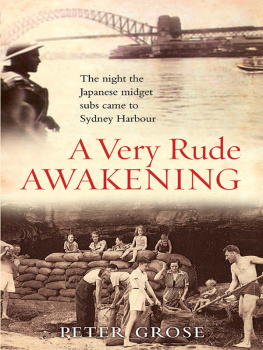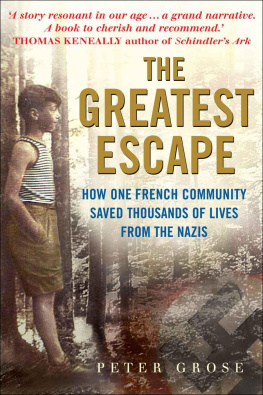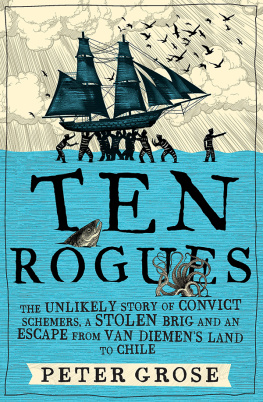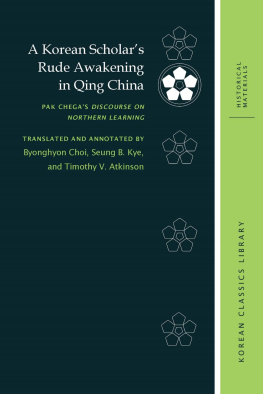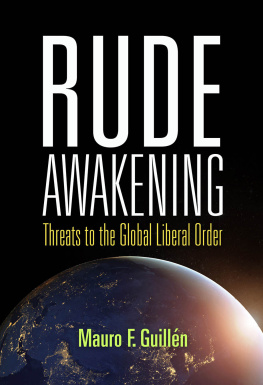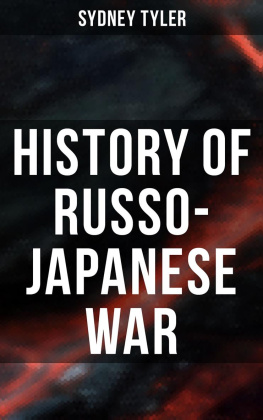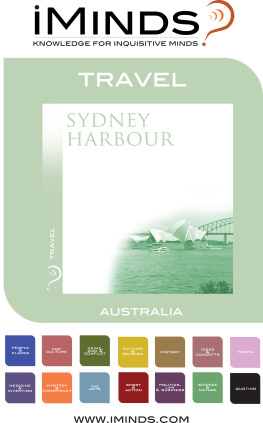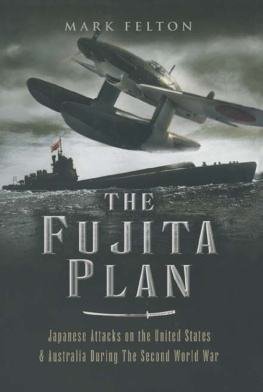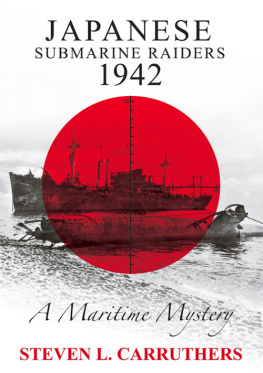Peter Grose - A Very Rude Awakening: The night the Japanese midget subs came to Sydney Harbour
Here you can read online Peter Grose - A Very Rude Awakening: The night the Japanese midget subs came to Sydney Harbour full text of the book (entire story) in english for free. Download pdf and epub, get meaning, cover and reviews about this ebook. year: 2007, publisher: ORION, genre: History. Description of the work, (preface) as well as reviews are available. Best literature library LitArk.com created for fans of good reading and offers a wide selection of genres:
Romance novel
Science fiction
Adventure
Detective
Science
History
Home and family
Prose
Art
Politics
Computer
Non-fiction
Religion
Business
Children
Humor
Choose a favorite category and find really read worthwhile books. Enjoy immersion in the world of imagination, feel the emotions of the characters or learn something new for yourself, make an fascinating discovery.
- Book:A Very Rude Awakening: The night the Japanese midget subs came to Sydney Harbour
- Author:
- Publisher:ORION
- Genre:
- Year:2007
- Rating:3 / 5
- Favourites:Add to favourites
- Your mark:
- 60
- 1
- 2
- 3
- 4
- 5
A Very Rude Awakening: The night the Japanese midget subs came to Sydney Harbour: summary, description and annotation
We offer to read an annotation, description, summary or preface (depends on what the author of the book "A Very Rude Awakening: The night the Japanese midget subs came to Sydney Harbour" wrote himself). If you haven't found the necessary information about the book — write in the comments, we will try to find it.
A Very Rude Awakening: The night the Japanese midget subs came to Sydney Harbour — read online for free the complete book (whole text) full work
Below is the text of the book, divided by pages. System saving the place of the last page read, allows you to conveniently read the book "A Very Rude Awakening: The night the Japanese midget subs came to Sydney Harbour" online for free, without having to search again every time where you left off. Put a bookmark, and you can go to the page where you finished reading at any time.
Font size:
Interval:
Bookmark:
A VERY RUDE AWAKENING
A VERY RUDE
AWAKENING
T HE NIGHT THE J APANESE MIDGET SUBS
CAME TO S YDNEY H ARBOUR

PETER GROSE

First published in 2007
Copyright Peter Grose 2007
All rights reserved. No part of this book may be reproduced or transmitted in any form or by any means, electronic or mechanical, including photocopying, recording or by any information storage and retrieval system, without prior permission in writing from the publisher. The Australian Copyright Act 1968 (the Act) allows a maximum of one chapter or 10 per cent of this book, whichever is the greater, to be photocopied by any educational institution for its educational purposes provided that the educational institution (or body that administers it) has given a remuneration notice to Copyright Agency Limited (CAL) under the Act.
Allen & Unwin
83 Alexander Street
Crows Nest NSW 2065
Australia
Phone: (61 2) 8425 0100
Fax: (61 2) 9906 2218
Email: info@allenandunwin.com
Web: www.allenandunwin.com
National Library of Australia
Cataloguing-in-Publication entry:
Grose, Peter, 1941.
A very rude awakening : the night the Japanese midget subs
came to Sydney Harbour.
Bibiography.
Includes index.
ISBN 978 1 74175 219 9 (pbk.).
1. Midget submarines. 2.World War, 1939-1945 - Naval
operations - Submarine. 3.World War, 1939-1945 - Naval
operations, Japanese. 4. Sydney (N.S.W.) - History
Bombardment, 1942. I.Title.
940.545952
Internal design by Darian Causby Illustrations and maps by Ian Faulkner (unless otherwise attributed) Set in 12/16 pt Bembo by Midland Typesetters, Australia Printed and bound in Australia by Griffin Press
10 9 8 7 6 5 4 3 2 1
For my wife Roslyn, whose mother hid her under the kitchen table while allthis was going on. And with special thanks to my publisher and lifelong friendRichard Walsh, whose mother threw him into the umbrella cupboard instead.
Contents
T he Japanese midget submarine raid on Sydney Harbour is one of those events, like the assassination of President Kennedy or the death of Princess Diana, where everybody seems to remember what they were doing at the time. It is hard to find a Sydneysider who cant tell you where they were, or what their neighbours or parents or grandparents were doing, on the night their harbour became a battlefield.
The raid has been the subject of endless magazine articles, radio and television documentaries, and has featured in many books.Yet one story has remained largely untold: how did Sydney respond to the attack? The focus has always been on the Japanese raiders. Where did they come from? What exactly did they do?
The Japanese were not the only heroes that night. From the civilian nightwatchman in his rowboat who first raised the alarm, to the young Australian Navy lieutenant on his first night of command who fired the first effective depth charge (and crippled his own ship in the process), there were heroes aplenty among the defenders.
There were failures as well.The defences were slapdash, the command was erratic, and there was a lot of undisciplined gunfire, which happily did little damage beyond blasting chunks out of the venerable stonework of Fort Denison in mid-harbour. Some of the command decisions, like the order to commercial traffic on the harbour to keep moving as normal and fully lit, were plain barmy.
By the end of the night 27 men had died19 Australian and two British sailors, and the six Japanese crew of the three midget submarines. All three submarines were sunk, only one by hostile action.The Kuttabul, a converted ferry used as a dormitory for junior seamen, lay partially submerged against the harbour wall, smashed by the torpedo which exploded beneath her.
There can be no doubting the courage of the Japanese sailors. But courage was not in short supply that night. Nor was incompetence, confusion and indecision. Luck, too, played its part, mostly favouring the defence.
I hope the reader will bear with me as I give the political and historical background, both Australian and Japanese, to the raid. In the 21st century we complain of the speed of change, as we adapt to a high-tech global village.Yet at the time of the midget submarine raid, the world must have appeared to the people of Australia to be spinning out of control. The certainties of white supremacy evaporated in the humiliation of Singapores fall; the invincible British Empire suddenly looked frail and vulnerable; 160 years of Australian foreign policy were overturned in three weeksa change that has lasted to this day, putting Australian soldiers on the streets of Iraq. It is impossible to understand the actions and reactions in Sydney on the night of 31 May and 1 June 1942, without first delving into this background.
Peter Grose,
March 2007
Part I
PREPARATION
Chapter 1
Theres a war on
S ydney was suffering an uncharacteristically foul night on Sunday, 31 May 1942.Winter would begin next day, and the golden beaches had long been abandoned. Throughout the day the south-west wind brought squally rain and biting cold to city and suburbs. The rain died back by evening, but the sky stayed thick with cloud, masking the full moon. In town the soldiers, sailors and airmen made the best of their leave at Sydneys traditionally boisterous theatres, nightclubs, restaurants, illegal gambling dens, and brothels. In 1942 entertainment was a seven-days-a-week affair. After all, there was a war on.
Sydney in 1942 would be unrecognisable to the citizens of that gleaming Emerald City today. The iconic Harbour Bridge was a mere 10 years old, and still something of a novelty. Men wore hats. Nice women wore gloves. Divorce was a source of shame.The tallest building in Sydney was the 13-storey AWA tower in York Street, whose art deco walls are today jostled to oblivion by the surrounding forest of skyscrapers stretching up to 300 metres. Sydneys civic architecture in 1942 was still low-rise colonial conventional, a triumphalist embodiment of British Empire solidity and bourgeois virtue rather than the soaring celebration of the imagination which is the Sydney Opera House today.
Australias rich then were not stock-market wizards or property developers. They were the sheep and cattle barons, the so-called squattocracy made up from old families of the colony. They owned huge tracts of land in the outback, overseen from graceful homesteads, and grew rich from the insatiable worldwide demand for Australian wool and beef. They kept splendid second homes in Sydney and Melbourne, and sent their sons and daughters to expensive boarding schools in the capital cities. Meanwhile, the wrought-iron balconied terrace houses of Sydneys Paddington and Surry Hills had to wait another 25 years to become fashionable. In 1942 they were slums.
It was a city of hypocrites. Pubs closed their bars at 6 pm. Sly grog shops flourished thereafter.The police were quick to ferret out obscene books and bawdy art exhibitions.Yet the citys vice squad seemed unable to pinpoint the location of brothels in Palmer Street and Chapel Street, near Kings Cross. Gambling other than via an on-course bookmaker was illegal.The classic Australian game of two-up, involving the tossing of two coins while punters bet on two heads or two tails, could be found in suburban backyards and bushland clearings everywhere.Thommos Two-up School, which prudently shifted location every so often including a brief stint on a ferry, had been a household name for over 20 years. It managed to stay several steps ahead of a none-too-zealous police force throughout the war. The notorious Tilly Divine and Kate Lee ruled an underworld of prostitution, illegal drinking and illegal betting. Police demands were very reasonable. No doubt there were some honest vice squad coppers, but the rest offered blind-eye service at affordable prices.
Next pageFont size:
Interval:
Bookmark:
Similar books «A Very Rude Awakening: The night the Japanese midget subs came to Sydney Harbour»
Look at similar books to A Very Rude Awakening: The night the Japanese midget subs came to Sydney Harbour. We have selected literature similar in name and meaning in the hope of providing readers with more options to find new, interesting, not yet read works.
Discussion, reviews of the book A Very Rude Awakening: The night the Japanese midget subs came to Sydney Harbour and just readers' own opinions. Leave your comments, write what you think about the work, its meaning or the main characters. Specify what exactly you liked and what you didn't like, and why you think so.

